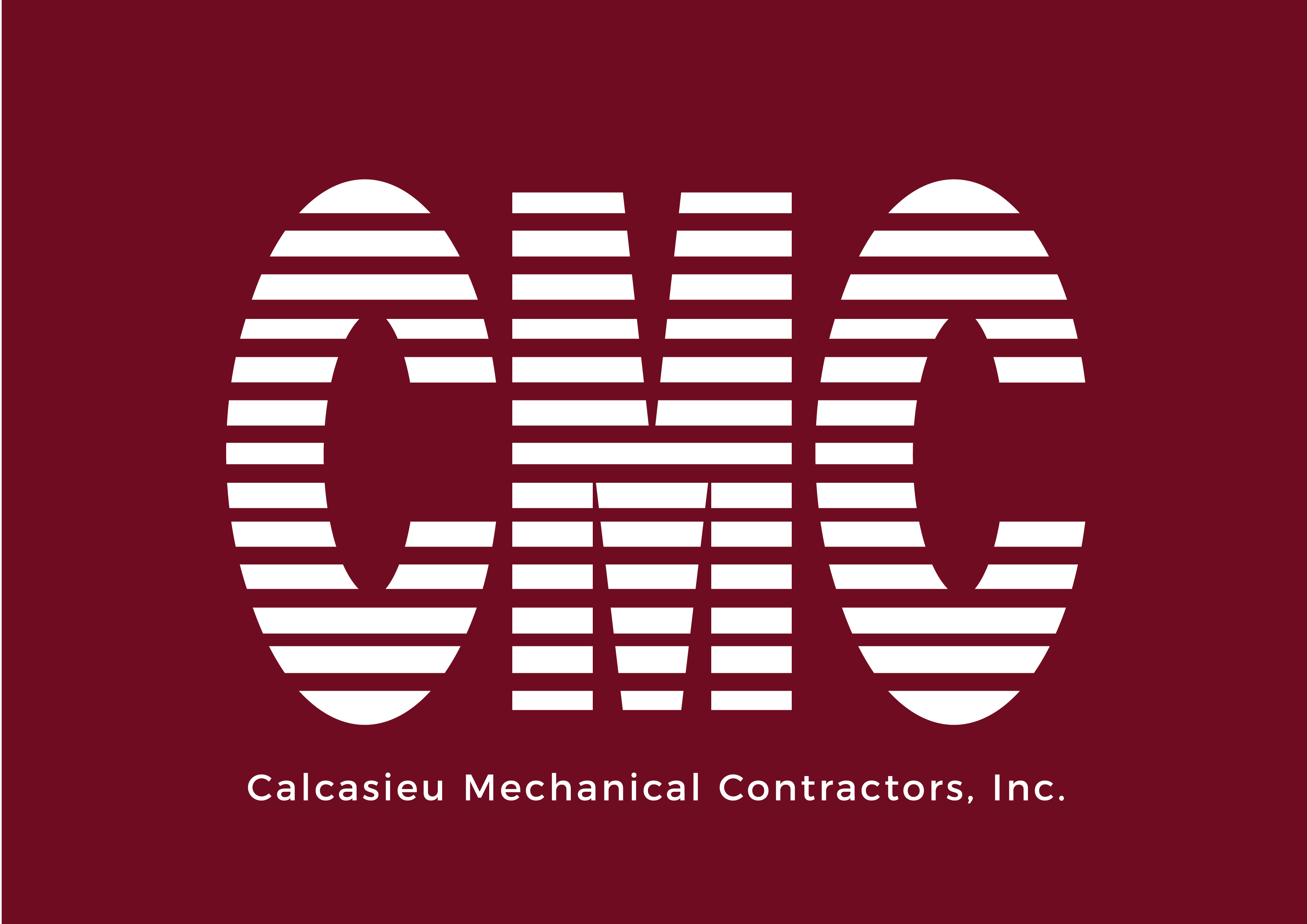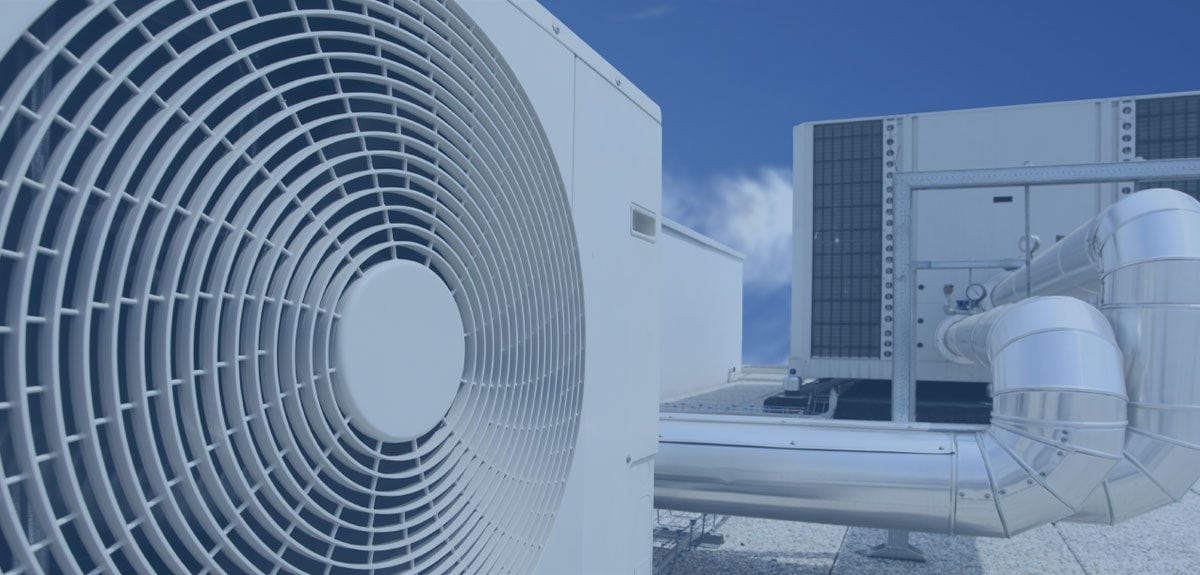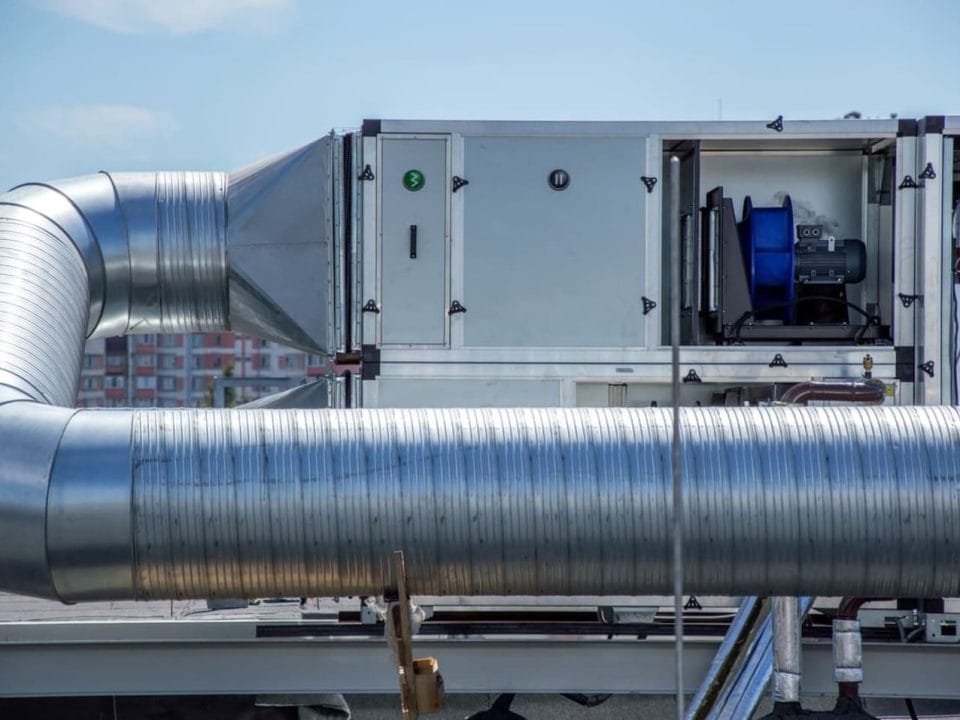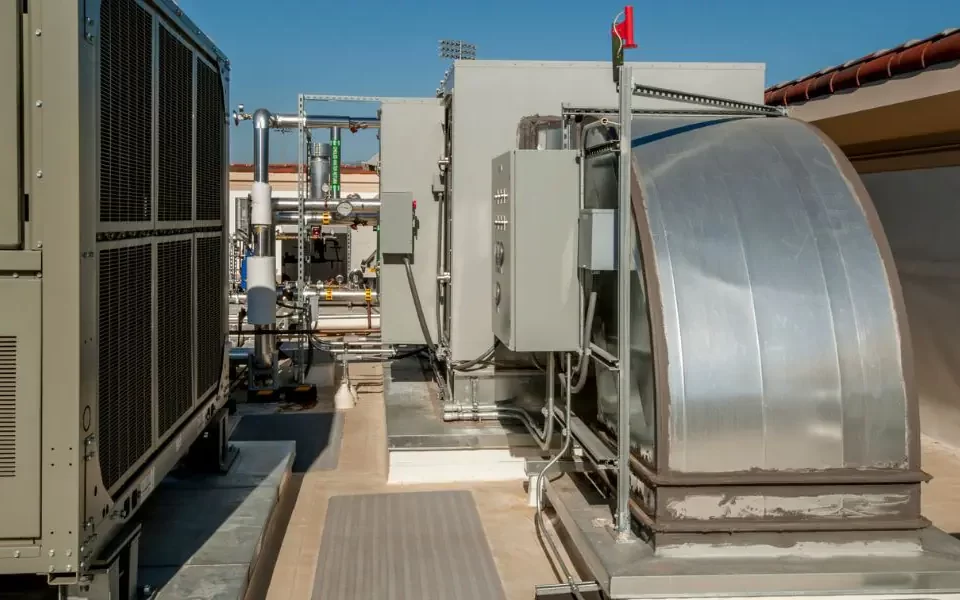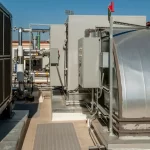
How to Improve HVAC System Efficiency in Older Buildings
May 27, 2025
How to Select a Trustworthy HVAC Service Company: Expert Tips
June 26, 2025When selecting the best HVAC system for your building, there are several factors to consider, and understanding the differences between a rooftop HVAC unit and other types can help you make an informed decision. You’ll find that rooftop units offer space-saving design and reduced noise, while other systems like split or furnace and condenser setups provide different benefits in installation flexibility and cost. By exploring the advantages and potential challenges of each, you can select the system that best matches your needs, budget, and building type. For professional guidance, Calcasieu Mechanical Contractors, Inc. is equipped to assist you with expert installation and support.
Key Takeaways:
- Rooftop HVAC units consolidate heating and cooling components into a single cabinet on the roof, saving indoor space and reducing noise, making them well-suited for commercial buildings.
- Split systems and furnace/condenser systems offer greater flexibility with components housed both indoors and outdoors, often resulting in moderate initial costs and adaptability for residential or smaller-scale applications.
- Installation of rooftop units requires structural support and professional handling, while energy efficiency and maintenance needs vary between rooftop and other HVAC types, making climate, building type, and future expansion key factors in selecting the right system for your project with Calcasieu Mechanical Contractors, Inc.
Unpacking the HVAC Landscape
What Constitutes an HVAC System?
An HVAC system combines heating, ventilation, and air conditioning components to regulate the indoor climate effectively. It maintains comfort by regulating temperature and humidity while enhancing air quality through proper ventilation. Whether installed in a commercial building or residential home, these systems control airflow, filter pollutants, and ensure consistent environmental conditions throughout the space.
A Look at Various HVAC Solutions
Several HVAC configurations offer distinct advantages depending on your building type and needs. Rooftop units consolidate all equipment into a single outdoor cabinet, optimizing indoor space and reducing noise. Split systems, on the other hand, separate components between indoor and outdoor units linked by refrigerant lines, providing flexibility in installation and repairs. Furnace and condenser systems combine heating and cooling in separate units, making them ideal for climates that require strong heating capabilities.
Exploring specific solutions further reveals how split systems excel in homes where indoor aesthetics and quiet operation are important, thanks to their discreet indoor components. Rooftop units prove their value in commercial settings by freeing up indoor space, simplifying maintenance access, and minimizing disruptions. Meanwhile, furnace and condenser arrangements can deliver robust heat during colder months, making them well-suited for northern climates or larger residential properties. Your choice hinges on balancing installation logistics, efficiency, and operational costs, considering your location and plans.
Exploring the Rooftop HVAC Unit
Defining Rooftop HVAC Systems
A rooftop HVAC system integrates heating, cooling, and ventilation components into a single cabinet mounted atop a building. Often referred to as an RTU, this configuration frees up valuable indoor space by relocating equipment outdoors. You’ll find rooftop units predominantly in commercial settings, where their ability to combine multiple functions in one unit simplifies design and maximizes efficiency.
Key Advantages of Rooftop Units
Rooftop HVAC units offer excellent space efficiency by eliminating the need for indoor mechanical rooms, reducing operational noise within buildings, and simplifying maintenance with easier rooftop access. Their all-in-one design also shortens installation time. These benefits make RTUs particularly attractive for large commercial buildings that require scalable, centralized climate control.
Further advantages include improved indoor air quality management through integrated ventilation systems and protection of HVAC components from vandalism or accidental damage, since the units are located outside and above ground level. Additionally, rooftop units reduce ductwork complexity compared to split systems, which can potentially lower energy losses.
Essential Installation Factors
Installing a rooftop unit requires a comprehensive structural assessment to ensure the equipment’s weight can be accommodated, which can exceed several hundred pounds. You must consider the roof load capacity, ensure waterproofing around unit penetrations, and plan for adequate rooftop access for maintenance purposes. Recognizing these factors upfront prevents costly retrofits and ensures long-term reliability.
Important installation considerations include:
- Structural reinforcement to support the RTU’s weight and vibrations
- Roof surface condition to avoid damage and leaks
- Clearance and accessibility for service technicians
- Weatherproofing measures like flashing and seals
Recognizing these elements helps you partner effectively with contractors like Calcasieu Mechanical Contractors, Inc., who specialize in rooftop HVAC installations tailored to local building codes and climate conditions.
Analyzing Alternative HVAC Solutions
Dissecting Split HVAC Systems
Split HVAC systems separate heating and cooling components between indoor and outdoor units, linked by refrigerant lines. This design offers flexibility, allowing you to install the indoor unit discreetly and optimize space and aesthetics. The outdoor condenser handles heat exchange, while the indoor air handler circulates conditioned air. Split systems often achieve higher SEER ratings, contributing to energy savings of up to 30% compared to traditional setups. Their modular nature makes maintenance easier, as you can address issues on one unit without disrupting the other. This system’s adaptability suits a range of building types, from apartments to small commercial spaces.
The Mechanisms of Furnace and Condenser Systems
Furnace and condenser systems operate with distinct heating and cooling components, relying on a furnace to produce warm air and an outdoor condenser unit for cooling. Together, they manage temperature control by switching between these components on a seasonal basis. This separation simplifies repairs and enables upgrades to individual parts without requiring the replacement of the entire system. Furnaces commonly use natural gas or propane, offering efficiency levels ranging from 80% to over 98% AFUE (Annual Fuel Utilization Efficiency), which can substantially reduce your heating costs during colder months.
Delving deeper, furnace and condenser systems employ a forced-air method, where the furnace heats air through combustion and then distributes it through ductwork. Meanwhile, the condenser compresses refrigerant to remove heat from the indoor air during warmer periods. The system’s reliability hinges on proper duct sealing; leaks can reduce efficiency by over 20%, increasing energy consumption. Many newer models incorporate variable-speed blowers and two-stage furnaces, which improve comfort by maintaining steady temperatures and reducing utility bills. For households in climates with distinct seasons, this dual approach offers robust performance and long-term value.
Rooftop HVAC Units vs. Their Competitors
Maximizing Space: A Comparison
Your rooftop HVAC unit frees up valuable indoor space by positioning all components above the building, particularly advantageous in commercial spots where floor area is at a premium. In contrast, split systems occupy interior and exterior locations, often requiring dedicated closets or mechanical rooms. This division can limit space flexibility, especially in smaller buildings or retrofits. Below is a concise comparison:
| Rooftop HVAC Units | Split Systems |
|---|---|
| All-in-one cabinet placed on the rooftop, saving indoor space | Components split between indoors and outdoors, requiring mechanical rooms or closets |
| Enables more flexible floor layouts without sacrificing space for equipment | Indoor space must account for air handlers and ductwork, limiting usable rooms |
| Ideal for new commercial construction where rooftop access is feasible | Better suited for residential or smaller commercial buildings with easier access needs |
Installation and Maintenance: A Tale of Two Systems
Installing rooftop units often involves reinforcing the roof structure and using professional rigging to safely position the system, which can increase initial complexity and cost. Maintenance is centralized since all components are accessible externally, reducing disruption inside the building. Split and furnace/condenser systems are generally easier to install at ground level, but they require servicing at multiple locations, potentially increasing the time and intrusion required for maintenance visits.
With rooftop units, you’ll need to coordinate with structural engineers and specialized installers due to the weight and rooftop placement, which can sometimes extend project timelines. However, once installed, you benefit from streamlined maintenance that can be accessed outside occupied spaces, limiting interruptions. Split systems’ indoor units may require access to ducts or filters in living or working areas, which can disrupt occupants but simplify initial installation by avoiding rooftop logistics.
Energy Efficiency: How Do They Stack Up?
Rooftop HVAC units can deliver strong energy performance when sized correctly, especially for large commercial spaces with uniform load demands. Their enclosed design optimizes airflow and reduces energy loss. Split systems, meanwhile, offer greater control and zoning options, allowing for tailored heating and cooling that can enhance efficiency in multi-room environments. The choice hinges on your building’s layout and usage patterns.
Energy modeling shows rooftop units excel in minimizing duct runs and potential leak points, preserving conditioned air efficiently. Conversely, split systems’ variable refrigerant flow technology offers precision and energy savings by adjusting outputs room by room. If you value localized control paired with moderate commercial or residential scale, split systems can provide improved utility savings over time, especially in climates with variable temperature demands.
Financial Implications: Upfront and Long-Term Costs
The initial investment in rooftop HVAC installation is often higher due to the need for structural reinforcements and crane usage, but can be offset by lower interior remodeling costs and reduced disruptions. Over the long term, rooftop units lower operational expenses through centralized maintenance and better noise mitigation, potentially reducing tenant complaints and turnover.
Split systems typically require lower upfront costs with simpler installation processes, making them appealing for smaller budgets or phased projects. However, multiple units increase the frequency of maintenance and parts replacement, which can lead to accumulated expenses. Factoring in energy costs, split systems may yield savings in diverse climates due to zoning capabilities, while rooftop units stabilize operating costs for larger, open-plan environments.
The Decision-Making Matrix: Choosing Your HVAC System
Navigating Special Considerations
Examining factors such as building size, noise restrictions, and maintenance access can inform your HVAC choice. Rooftop units excel in saving interior space and reducing noise transmission indoors, while split systems might offer easier servicing options due to their dispersed components. Weight limits on rooftops and the need for structural reinforcements also come into play, making a detailed site evaluation crucial before committing to an installation.
Climate and Its Impact on System Choice
Your local climate heavily influences HVAC performance and longevity. In humid areas like South Florida, rooftop units with corrosion-resistant coatings are better equipped to handle salty air, whereas split systems offer flexible zoning for variable temperatures. Conversely, colder climates such as Montreal demand systems optimized for heating efficiency and freeze protection options, often favoring split or furnace/condenser setups.
Extending this further, climates with wide seasonal fluctuations require HVAC systems capable of rapid mode switching and efficient energy use year-round. Rooftop units often integrate variable-speed compressors and economizers to adapt to these conditions. On the other hand, split systems may allow for tailored configurations, such as heat pumps or supplementary heaters, to complement harsh winter demands. Evaluating these climate-specific technologies ensures your system performs reliably while controlling operating costs.
Adapting to Building Type and Location
High-rise commercial buildings frequently benefit from rooftop HVAC units because they liberate valuable indoor space and mitigate noise on working floors. Residential and low-rise structures often opt for split systems or furnace and condenser combinations due to their modular setup and ease of indoor integration. Access for installation and servicing also influences the decision, as rooftop units require crane lifts and strengthened supports that are uncommon in smaller buildings.
Diving deeper, historic buildings or those with aesthetic preservation needs might limit rooftop installations due to visual impact or weight restrictions. Urban locations with limited roof accessibility can also pose challenges to rooftop unit serviceability. Split systems, with indoor and outdoor units positioned separately, can be more discreet and technically adaptable to awkward footprints. Tailoring your HVAC choice to your building’s architecture and physical context helps avoid costly retrofitting and operational bottlenecks.
Forward-Thinking: Future-Proofing and Flexibility
Planning for system expansions or technology upgrades can influence your current HVAC investment. Split systems offer easier scalability through the addition or upgrading of individual units, while rooftop HVACs consolidate service but may limit straightforward expansion. Anticipating changes in building use, occupancy, or energy codes helps align your selection with both current needs and potential growth.
Expanding on flexibility, emerging trends such as smart controls and high-efficiency components integrate more seamlessly with modular split systems, allowing for staged upgrades without requiring full replacements. Rooftop units, although robust, sometimes require a higher upfront investment to incorporate advanced technologies. Evaluating these lifecycle aspects supports a sustainable, adaptable HVAC strategy aligned with evolving operational demands.
Regional Preferences and Trends
Heating and cooling norms vary widely by region. In Montreal, systems must be robustly designed to address subzero winters with reliable heating capacity, often utilizing combinations of furnaces and condensers or heat pumps optimized for cold climates. South Florida’s focus on humidity control and cooling load management leans toward rooftop units with advanced ventilation features and corrosion resistance.
Furthermore, regional energy incentives and contractor expertise significantly influence adoption patterns. For example, areas with incentives for energy-efficient HVAC systems tend to favor high-performance split systems equipped with variable refrigerant flow (VRF) technology. Local installers familiar with regional challenges offer valuable insights that streamline installation and ensure compliance. Aligning your HVAC choice with regional standards and contractor knowledge ensures smoother implementation and long-term satisfaction.
Summing Up
Now that you understand the differences between rooftop HVAC units and other systems, you can better evaluate which option suits your needs. Rooftop units excel in saving indoor space and reducing noise, making them ideal for commercial buildings. In contrast, split and furnace condenser systems offer greater flexibility and often lower initial costs, fitting a variety of residential and commercial applications. By considering your building type, climate, and long-term goals, you can make an informed choice that aligns with your priorities. For professional guidance, Calcasieu Mechanical Contractors, Inc. can help ensure your HVAC system matches your specific requirements.
FAQ
Q: What are the main benefits of choosing a rooftop HVAC unit over other types of HVAC systems?
A: Rooftop HVAC units offer several advantages, including efficient space utilization by freeing up interior areas, reduced indoor noise since the equipment is placed on the roof, and easier access for maintenance without disturbing building occupants. These benefits make rooftop units especially suitable for commercial buildings where space and noise minimization are priorities.
Q: How do split systems compare to rooftop HVAC units in terms of installation and maintenance?
A: Split systems typically require installation of separate indoor and outdoor components connected by refrigerant lines, which can be less complex structurally but may demand more indoor space. Maintenance for split systems often involves servicing components in multiple locations, whereas rooftop units consolidate all major parts in one cabinet, simplifying routine checks. However, rooftop units do require proper roof reinforcement and professional installation to ensure safety and optimal operation.
Q: Are rooftop HVAC units more energy efficient compared to furnace and condenser systems?
A: Energy efficiency varies depending on system design and usage patterns. Rooftop HVAC units can be highly efficient for large commercial spaces due to integrated controls and centralized operation, but may have higher initial energy consumption in some cases. Furnace and condenser systems, often used in residential settings, provide flexible operation and can be more cost-effective in moderate climates. Assessing your specific building requirements and climate will help determine the most energy-efficient choice.

Hailing from the picturesque town of Lake Charles, Louisiana, Jim Blanchard stands as an exemplar in commercial HVAC installation and services. As President of Calcasieu Mechanical, he has leveraged his deep industry knowledge and innovative strategies to establish the company as a leading regional service provider. Under Jim’s leadership, Calcasieu Mechanical has expanded its portfolio of high-quality services and earned the trust and respect of businesses throughout Louisiana. The company’s commitment to excellence, reflected in its endeavors, stems from Jim’s dedication to ensuring every project meets and exceeds client expectations.
